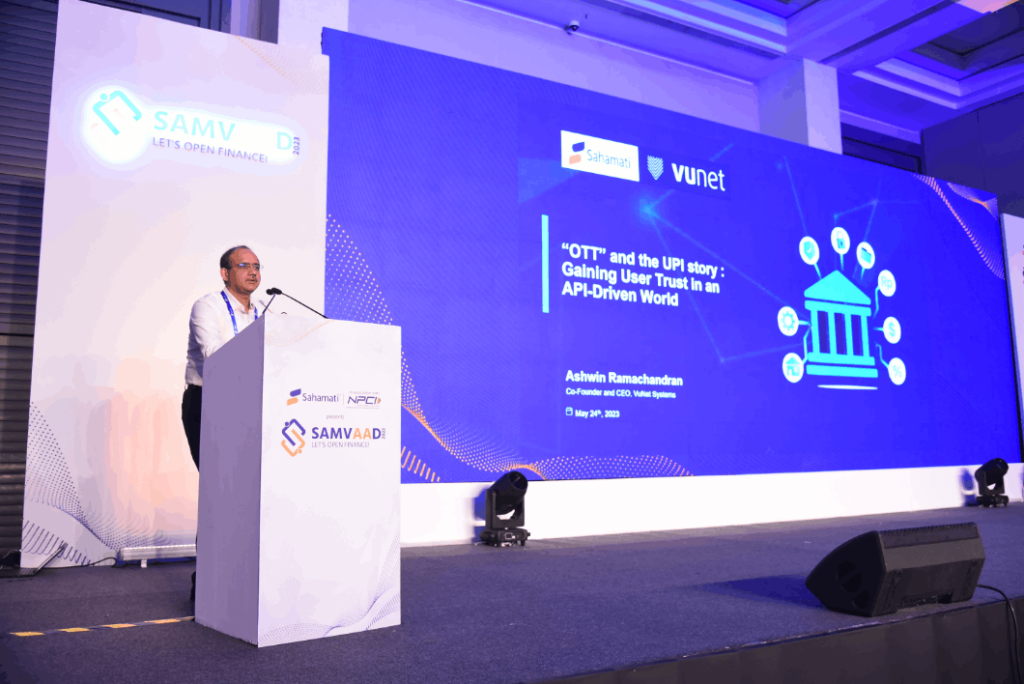OTT and the UPI Story: Gaining User Trust in an API-Driven World
In the ever-evolving landscape of technology, APIs (Application Programming Interfaces) have emerged as the backbone of numerous services and applications. From mobile apps to online platforms, APIs enable seamless interactions between different software components, facilitating data exchange and functionality. However, as these technologies advance, one critical factor stands out: user trust

Deep Observability
Observability revolves around gaining deep insights into the systems that drive financial technology. It’s not just about monitoring the surface-level metrics but understanding the intricate web of interactions beneath the surface. For UPI, this translates into end-to-end monitoring of transactions. By tracking each touchpoint of a transaction, from the API gateway to core banking servers and middleware, one can gain comprehensive visibility into their operations. This deep observability empowers the identification of bottlenecks, troubleshooting issues, and ensuring seamless operations.
Transparency: Weakest Link Matters
Transparency goes beyond just success rates. Providing transparency across the entire transaction journey ensures that each participant is aware of the performance of all involved entities. When a user initiates a transaction, they need to trust not just the entity they are directly interacting with but also every other component that contributes to the success of that transaction. Transparent reporting of performance and reliability metrics fosters user trust and encourages adoption.
Traceability: Navigating the Complexities
UPI transactions involve multiple entities and API calls, each with multiple touchpoints. As the scale of transactions increases, so does the complexity of tracking failures and identifying root causes. Traceability comes to the rescue by pinpointing the exact component responsible for a failure. This empowers customer support teams to provide accurate assistance, expedites root cause analysis, and facilitates compliance audits. Traceability enhances the user experience and brings a layer of accountability to the entire ecosystem.
Impact on User Experience and Business Growth
Ecosystems can significantly improve success rates and transaction speeds by embracing deep observability, transparency, and traceability (OTT). Smooth operations and reliable services lead to enhanced user experiences, minimizing business loss aversion. In an era where users demand seamless, reliable, and real-time services, these factors are no longer just preferences but prerequisites for sustainable growth.
Business Journey Observability
The need for a robust visibility solution is paramount in the modern tech landscape. Business Journey Observability is a top-down approach that breaks down silos, giving a unified view across application layers, infrastructure, APIs, and channels. It translates IT metrics into business-relevant insights, enabling a profound understanding of protocols, micro-transaction states, and entities directly influencing business KPIs.
| Business Observability leads to a “System of Intelligence | |||
| Journey View | Real-time insights | Automation | Measurability |
| Augment Fraud and Security | Business Analytics | Augment Risk and Compliance | |
This solution seamlessly handles real-time scaling, transitioning between high-level summaries and granular transaction analysis. Its intelligence progresses from reactive responses to proactive and predictive recommendations, empowering better operations. Moreover, it establishes a measurable framework that aligns with Site Reliability Engineering (SRE) principles, fostering continuous improvement through feedback loops.
| Data Sources | Data Acquisition | Observability Platform | Insight |
| Logs Metrics Transaction data Traces |
Agent/Agentless Open Telemetry |
5) AIOPS 6) Visualization |
Dashboards Predictive Analytics Notifications Recommendations Automation |
| 4) Business Journey Platform | |||
| 1) Ingestion 2) Contextualization 3) Correlation |
This SamvAAd Knowledge Session was delivered by the VuNet team. To check out the complete recorded session, click the link below: